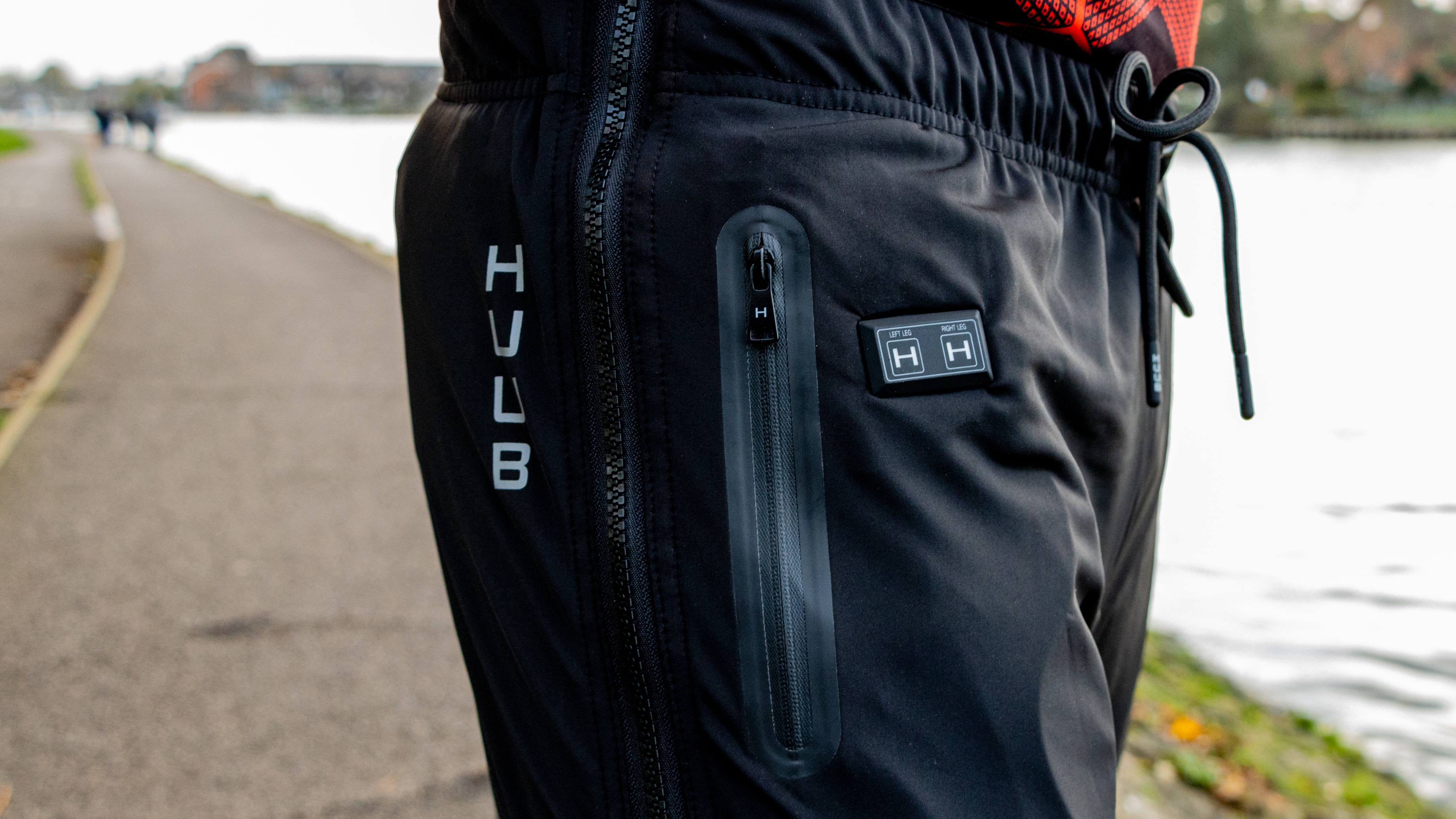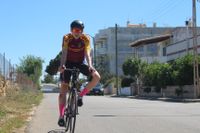Are heated trousers cycling's next marginal gain? Our data scientist investigates...
The science says a decline in muscle temperature means a decline in peak power - so can heated warm-up trousers guarantee a hot sprint?


Every now and then a piece of tech comes along so polarising that some condemn it as outrageously unnecessary while others can't live without it.
That’s what we have with Huub’s £398.99 Heated Trousers.
The idea of these is that they keep your legs warm between your warm-up and your race. The idea is a simple one: why spend all that effort lugging your turbo trainer or rollers around with you in order to warm up if you’re just going to get cold again before you race?
The science within the heated trousers

The first question anyone quite rightly asks is, how much difference will heated trousers make?
Muscle temperature plays a pivotal role in the amount of power we are able to produce while cycling. Some people feel this more acutely than others. Personally I find it can take me at least a quarter of an hour to get into a race, but I know people who warm up both considerably faster and slower than this.
Depending on the event, the time difference between your warm-up and the start of your race can vary significantly. Even at the highest level, this time gap can be significant. Commonwealth Games cyclist Emily Bridson told me that she had a 20-minute gap between her warm-up and race start in the cross-country mountain biking event and that getting cold after her warm-up is something she actively tries to prevent.
A time gap of 20 minutes is significant enough for a decline in muscle temperature and thus, a decline in performance.
The latest race content, interviews, features, reviews and expert buying guides, direct to your inbox!
This effect has been known for a number of years. I asked Jacob Tipper, who does R&D at Huub, is a also cycling coach and WattShop analyst, how much difference these trousers actually make. He pointed me to a study by Steve Faulkner et al from 2013 which shows that heated trousers improve peak and relative power by 9-10%, increase blood lactate (which is a good thing in the context of a sprint) and keep muscle temperature higher. Since this study, there have been a handful of others which have looked into various heating methods and tried to optimise the process.
Other "governing bodies who can’t be named" did internal testing too, according to Tipper. They’re being used at the highest level because they work. The increases in peak power are significant too: between 9-10% is not a marginal gain.
There is less work done on the usefulness of these trousers in a longer time trial, with all the work I could find being done on peak power and sprint sessions. That said, in endurance events including races on the track, cyclo-cross, mountain biking and even some road races, there is often quite a lot of sprinting at the start.
Putting the heated trousers to the test
Turning on the trousers, I was fully expecting to feel like I had wet myself. This was not my experience at all. There’s a number of temperature options available so I put them on full blast. It wasn’t uncomfortably hot and, amid the current cost of living crisis, might be a cheaper way to warm your legs up at home (though this probably doesn’t work out if you include the cost of the trousers in the first place…).
As someone who struggles to warm up, and stay warm, I thought I’d find these trousers very helpful. I tested them with a simple warm-up, waited 30 minutes and then did a maximal 90 second hill climb-esque effort with and without the trousers. There was some difference in power numbers with the effort including the trousers being about 5% better - but this was an extremely unscientific test.
The feeling in the legs for the effort with the trousers was what surprised me most, there was a marked reduction in that initial feeling of being shocked into a hard effort. I felt on top of the effort the whole way through. Often I find the first portion of an effort of this nature to be very hard but the trousers reduced that.
What are the Huub Heated Trousers like to wear and own?
They are, by no means, an unpleasant garment to wear when switched off or on. They’re comfortable, nice looking, high quality tracksuit trousers. Huub makes nice kit and has been a major player in the triathlon wetsuit industry for a long time where build quality is paramount (there’s nothing more annoying than your wetsuit ripping 10 minutes before the start of your race). It’s nice to see this attention to quality has extended across to their cycling kit too.
Washing the trousers is easy. You simply remove the battery pack and pop them in the machine. If you do break some aspect of the trousers, spare parts are available to purchase from Huub.

I fit somewhere between a small and a medium and ordered a size small from Huub. The trousers fit quite well so if you’re between sizes I wouldn’t be afraid of ordering a size down. The set comes as two boxes, the garment itself and an associated battery pack. The pack is charged with a USB cable and plugs into the trousers via the pocket.
So, are they worth it?
Well, as ever with a product like this, it’s not for everyone. You won’t be interested in dropping four hundred quid on a pair of trousers unless you take cycling pretty seriously. If you don’t bother with a warm-up, these are not for you - obviously.
Where I would say most of their value lies (away from track - if you ride track, get them) is cyclo-cross and mountain bike racing. This is because there is a hard sprint from the start for the first corner or narrow section and the opening laps are always very hard.
In road racing and some crits, you have a bit more time to get into the race - however some are full gas from the start. If you want to be, or have to be, ready to go from the gun, these trousers are for you. They will make a measurable difference in your peak power.
It’s not cheap though, retailing at £398.99 these cost roughly £42 per percentage point gain on your peak power (on average). This could be the difference between you making it to the first corner in the front few or getting caught behind trouble though.
Conclusion
These trousers obviously work quite well, actual science proves that. The question of whether or not you should pay the best part of £400 for them is really up to you. If you want an improvement of 9-10% in your peak power then these might just provide that. If you’re happy racing as you are then don’t.
One thing I would do is applaud Huub for making such a product though. It’s clear that these were never going to be for everybody, but a brand that’s willing to invest in the development of a product like this is a brand that contributes, in very real terms, to the development of cycling as a whole. It’s no surprise that so many recent records have been recorded by riders in skinsuits emblazoned with the Huub logo and I’d expect that to continue.

Tom Epton is a freelance writer and data scientist. Originally training as a scientist after completing his studies in physics he realised that cycling was what he wanted to spend his life thinking about. Now he works with manufacturers, athletes and teams using cutting edge data science methods to find performance gains. Tom writes primarily about sport-science and tech!